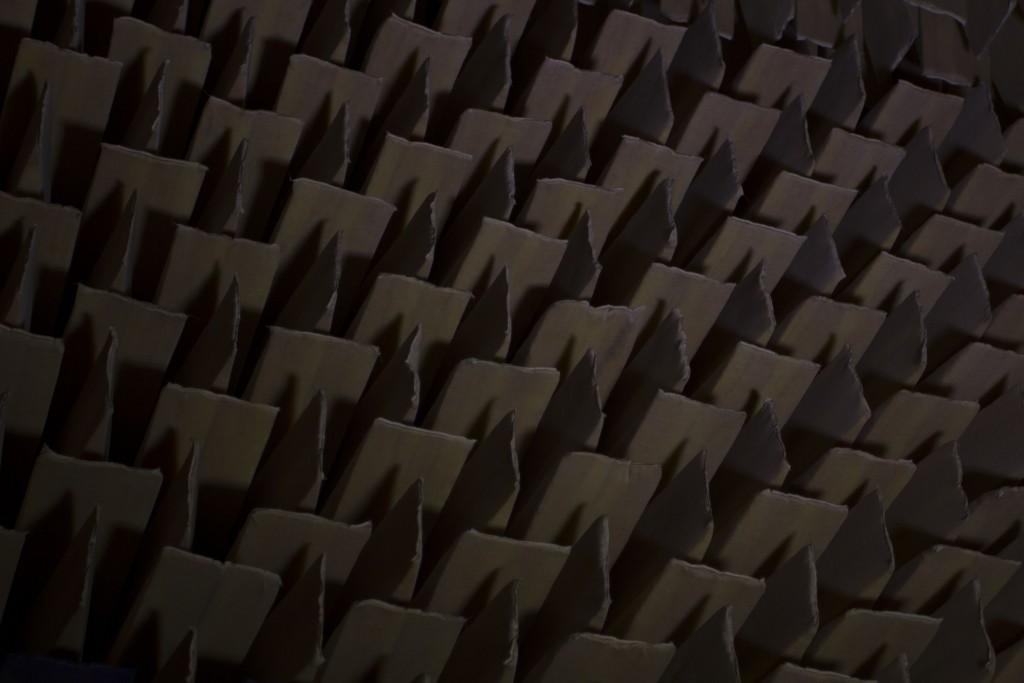Coming soon – The Trembling Line
We are looking forward to the opening of Aura Satz’s new show at the University’s John Hansard Gallery, running from 3 December 2015 – 23 January 2016. The show, The Trembling Line, is the result of Aura’s year as Artist in Residence at the university, sponsored by The Leverhulme Trust, and featuring collaboration between the artist, the Department of Music, and the Institute of Sound and Vibration Research. Music department staff and students participated in the centrepiece of the show, a sound and film installation entitled The Trembling Line, which has a score by Music’s Leo Grant. Here’s some more about the show from the official press release:
 The Trembling Line is an exhibition of works by Aura Satz exploring acoustics, vibration, sound visualisation and musical gesture with an aim to wrest the space between sound and image, to see how far these can be stretched apart before they fold back into one another. The title, The Trembling Line, refers in part to the basic principle of vibration, a disturbance of equilibrium, a tense line stimulated into motion and sound through friction, but also to the possibility of challenging static notation systems and destabilizing the experience of seeing and hearing.
The Trembling Line is an exhibition of works by Aura Satz exploring acoustics, vibration, sound visualisation and musical gesture with an aim to wrest the space between sound and image, to see how far these can be stretched apart before they fold back into one another. The title, The Trembling Line, refers in part to the basic principle of vibration, a disturbance of equilibrium, a tense line stimulated into motion and sound through friction, but also to the possibility of challenging static notation systems and destabilizing the experience of seeing and hearing.
The centrepiece of the show is the film and sound installation The Trembling Line, which explores visual and acoustic echoes between decipherable musical gestures and abstract patterning, orchestral swells and extreme slow-motion close-ups of strings and percussion. It features a score by Leo Grant, projected through an innovative spatial audio rendering system built by the Institute of Sound and Vibration Research as part of the S3A research project on immersive
listening.
The exhibition includes The Absorbing Wall (2015), dedicated to the memory of Stuart Croft and based on an anechoic chamber, along with five closely inter-connected films: Vocal Flame (2012); Oramics: Atlantis Anew (2011); Onomatopoeic Alphabet (2010); Theremin (2009); Automamusic (2008). Some of the works address the visualisation of sound as a morphing language in which patterns of sand, salt or fire correspond to sounds in unexpected ways. Others address gesture-less mechanical music or the compelling gesturality of a theremin, a sensitive instrument that is played without physical contact, merely by waving hands in its proximity, affecting the sounds produced by the instrument.
Satz is also interested in female figures that are largely excluded from mainstream historical discourse, in an ongoing engagement with the question of women’s contributions to labour, technological invention and scientific knowledge. Oramics: Atlantis Anew centres on the invention of a new sound-generating machine and correlated notation system invented by British electronic music pioneer Daphne Oram in 1957. Using principles of drawn-sound (the inverse of the other works which look at sound visualisation), Oram invented a system for sonifying graphic shapes and creating a new language of unheard electronic sounds. Similarly, Vocal Flame addresses popular
manifestations of the female disembodied voice, visualised as a wave of flames using an acoustic device known as a ‘Rubens’ Tube’.

